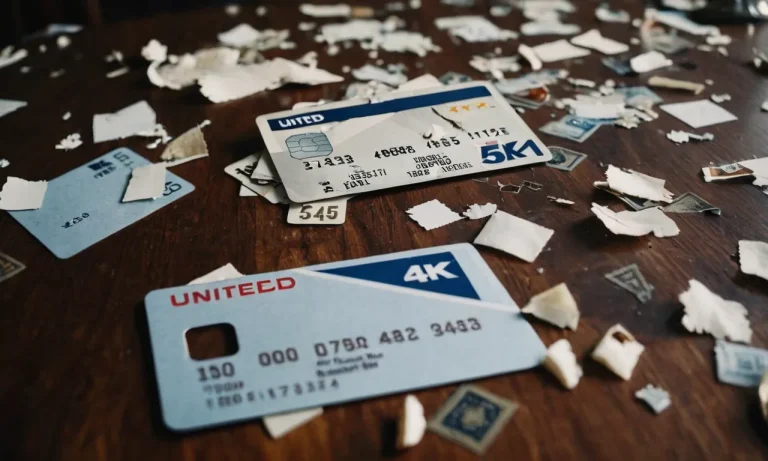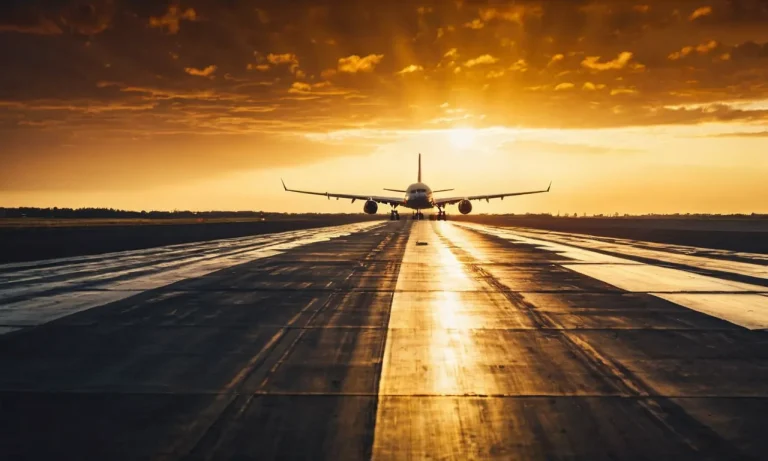What Do Cigarettes Look Like On Airport X-Ray Machines?
Cigarettes and other tobacco products have distinct appearances when scanned by the x-ray machines at airport security checkpoints. If you’re wondering what cigarettes look like to TSA agents, read on for a detailed breakdown.
If you’re short on time, here’s the quick answer: On x-ray machines, cigarettes show up as dense white objects in the shape of cylinders or rectangles. Packages of cigarettes are easy for TSA agents to identify.
How Do X-Ray Machines Work at Airports?
When it comes to airport security, X-ray machines play a crucial role in ensuring the safety of passengers and preventing any potential threats. These machines use a technology called X-ray imaging, which allows security personnel to see through objects and identify any hidden items.
Understanding the principles behind how X-ray machines work can give us a better insight into the process of screening luggage and personal belongings at airports.
Principles Behind X-Ray Imaging
X-ray imaging relies on the properties of X-rays, which are a type of electromagnetic radiation. X-rays have a higher frequency and shorter wavelength than visible light, allowing them to penetrate solid objects.
When an X-ray beam is directed towards an object, it passes through the less dense areas, such as clothing or paper, but is absorbed or scattered by denser materials like metals or liquids.
Inside an X-ray machine, an X-ray tube emits a narrow beam of X-rays that passes through the object being scanned. The X-rays that pass through are detected by a sensor on the other side, which creates an image based on the intensity of the detected radiation.
This image is then displayed on a monitor for security personnel to analyze.
The image produced by an X-ray machine is a grayscale representation of the object being scanned. Different materials appear as different shades of gray due to their varying densities. For example, metals appear as bright areas on the image, while organic materials like clothing or plastic appear darker.
Variations Between Machines
There are different types of X-ray machines used at airports, each with their own variations and capabilities. One common type is the baggage X-ray machine, which is designed to scan checked and carry-on luggage.
These machines are larger in size and have a conveyor belt that moves the bags through the X-ray tunnel for scanning.
Another type of X-ray machine used at airports is the body scanner or full-body X-ray machine. These machines are used for screening passengers and can detect objects hidden under clothing. Body scanners use a low-power X-ray beam that is safe for human exposure and can generate a detailed image of the body, highlighting any anomalies that may require further investigation.
It’s worth mentioning that airport X-ray machines are carefully calibrated to ensure they emit a safe level of radiation that is within the recommended guidelines. The technology used in these machines has undergone rigorous testing and continues to be improved to enhance security while prioritizing passenger safety.
For more information on X-ray machines and airport security, you can visit www.tsa.gov/travel/security-screening.
Rules for Cigarettes and Tobacco at Airports
TSA Tobacco Allowances
When it comes to traveling with cigarettes and tobacco products, it’s important to be aware of the rules and regulations set by the Transportation Security Administration (TSA). The TSA allows passengers to bring cigarettes in their carry-on or checked baggage, but there are limits to the quantity allowed.
Passengers are permitted to bring up to 200 cigarettes or 100 cigars in their carry-on or checked baggage. However, it’s worth noting that some airlines may have additional restrictions, so it’s always a good idea to check with your specific airline before traveling.
It’s also important to remember that electronic cigarettes and vaping devices are not allowed in checked baggage due to safety concerns. These items should be carried in your carry-on baggage and cannot be used during the flight.
International Travel Restrictions
When traveling internationally, it’s crucial to be aware of the tobacco restrictions and regulations in the destination country. Each country has its own rules regarding the import and export of cigarettes and tobacco products, and these rules can vary widely.
Some countries have strict limits on the number of cigarettes or tobacco products that can be brought in or taken out. For example, Australia has strict regulations on tobacco importation and individuals are only allowed to bring in up to 50 cigarettes or 50 grams of tobacco.
It’s important to research and familiarize yourself with the specific regulations of your destination country before traveling. You can find this information on the official government websites or by contacting the embassy or consulate of the country you plan to visit.
Additionally, it’s worth noting that certain countries have banned smoking in public places or have implemented strict anti-smoking campaigns. It’s always a good idea to respect local laws and customs when it comes to smoking while traveling.
For more information on TSA tobacco allowances, you can visit the official TSA website here.
Identifying Cigarettes and Tobacco on X-Rays
When it comes to airport security, X-ray machines play a vital role in detecting prohibited items. This includes cigarettes and other tobacco products. But what do these items actually look like on X-ray scans? Let’s explore.
Appearance of Cigarettes
Cigarettes typically appear as long, cylindrical shapes on X-ray machines. They are often grouped together in a pack, which can be easily identified due to its rectangular shape and distinctive patterns.
The tobacco inside the cigarettes may appear as densely packed materials, sometimes resembling dense fibers or solid masses on the X-ray images.
Appearance of Other Tobacco Products
Aside from cigarettes, other tobacco products such as cigars or pipe tobacco can also be detected on X-ray scans. Cigars usually have a more irregular shape compared to cigarettes, with a rounded end and a thicker body.
Pipe tobacco, on the other hand, may appear as loose, crumbled particles or small, compacted cylindrical shapes.
Distinguishing Tobacco from Other Items
While X-ray machines can easily identify cigarettes and tobacco products, it is important to distinguish them from other items that may have similar appearances. For example, chocolate bars or granola bars can sometimes resemble the shape and density of a pack of cigarettes.
However, their organic materials and lack of metallic components can help security personnel differentiate them from tobacco products.
It is worth mentioning that X-ray scans provide a detailed view of the internal structure of an item, allowing security personnel to identify even the smallest components. This means that even if someone tries to hide cigarettes inside another object, such as a hollowed-out book or a toy, the X-ray machine can still detect them.
For more information on airport security and the detection of prohibited items, you can visit the Transportation Security Administration (TSA) website. They provide detailed guidelines and resources to ensure a safe and secure travel experience for all passengers.
Advanced Threat Detection for Tobacco
When it comes to airport security, the detection of potential threats is of utmost importance. This includes not only explosives and weapons but also illicit substances such as tobacco products. To ensure the safety and well-being of passengers, airport authorities employ advanced X-ray machines to scan luggage and identify any prohibited items.
But what do cigarettes actually look like on these X-ray machines?
Explosives Detection
X-ray machines at airports are equipped with advanced threat detection technology that can identify a wide range of prohibited items, including explosives. These machines use a combination of high-resolution imaging and sophisticated algorithms to analyze the contents of luggage.
While cigarettes are not explosives, they can still be detected by these machines due to their distinct shape and density.
Using AI and Machine Learning
Modern X-ray machines used in airports are often integrated with artificial intelligence (AI) and machine learning algorithms. These algorithms have been trained on vast amounts of data to accurately identify various objects and substances, including tobacco products.
The AI algorithms are capable of recognizing the shape and density patterns associated with cigarettes, making it easier for security personnel to identify them during the screening process.
It is important to note that the primary goal of these X-ray machines is to detect potential threats to the safety of passengers and airport staff. While tobacco products may not pose a direct security risk, their detection helps ensure compliance with airport regulations and contributes to overall security efforts.
The use of AI and machine learning in threat detection has revolutionized airport security, allowing for faster and more accurate identification of potential threats. This technology not only enhances passenger safety but also helps streamline the screening process, reducing wait times and improving overall efficiency.
For more information on airport security and the use of X-ray machines in threat detection, you can visit the official website of the Transportation Security Administration (TSA) at www.tsa.gov.
What Happens If Cigarettes Are Found in Bags?
When cigarettes are found in bags during the screening process at airports, there are specific procedures that are followed to ensure the safety and security of all passengers. Cigarettes, being considered a prohibited item, can lead to additional screening procedures and potential consequences for the traveler.
Additional Screening Procedures
Upon discovering cigarettes in a passenger’s bag, airport security may request further examination. This could involve a thorough hand search of the bag to ensure that there are no other prohibited items present.
The purpose of this additional screening is to prevent any potential threats or dangers from making their way onto the aircraft.
In some cases, passengers may be asked to remove the cigarettes from their bags and place them in a separate container for further inspection. This allows security personnel to examine the cigarettes more closely to ensure they do not contain any illicit substances or hidden objects.
It is important to note that these additional screening procedures are in place to protect the safety of all passengers and are carried out in accordance with established security protocols.
Consequences for Prohibited Items
Carrying prohibited items, such as cigarettes, can result in various consequences depending on the severity of the violation and the airport’s policies. These consequences can range from warnings and confiscation of the items to potential fines or legal actions.
While the consequences for carrying cigarettes may not be as severe as those for carrying more dangerous items, it is still important to comply with airport regulations. Ignorance of the rules is not an excuse, and travelers should familiarize themselves with the prohibited items list provided by the airport or transportation authority.
In some cases, carrying a large quantity of cigarettes may raise suspicions of smuggling or other illegal activities. This could lead to further investigation by airport authorities or even involvement of law enforcement agencies.
To avoid any complications or potential consequences, it is best to adhere to the rules and regulations set forth by airport authorities. It is recommended to check the airport’s website or contact the airline for specific guidelines on carrying cigarettes or any other prohibited items.
Conclusion
So in summary, cigarettes and tobacco show up as dense white shapes on x-ray machines at airports. TSA agents are trained to easily identify tobacco products inside luggage to enforce rules about permitted amounts.
Understanding what cigarettes look like on x-rays and being aware of tobacco regulations can ensure a smooth airport screening process.








